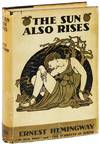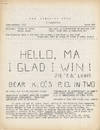
Nuclear Weapons and Aircraft Carriers: How the Bomb Saved Naval Aviation
by Jerry Miller
- Used
- Very Good
- Hardcover
- Signed
- first
- Condition
- Very Good/Very Good
- ISBN 10
- 1560989440
- ISBN 13
- 9781560989448
- Seller
-
La Porte, Texas, United States
Payment Methods Accepted
About This Item
Synopsis
Formerly commander of the U.S. Second Fleet and NATO striking forces in the Atlantic as well as the U.S. Sixth Fleet and NATO striking forces in the Mediterranean, Jerry Miller retired from the U.S. Navy in 1974. He spent most of his thirty-eight-year career as a fixed-wing pilot, seeing surface combat in a cruiser in the Pacific during World War II, becoming a fighter pilot and a commander of a fighter squadron during the Korean War, and commanding a carrier division during the Vietnam War. Since his retirement from active duty, Miller has used his extensive Navy experience in nuclear weapons targeting and delivery to serve as a national security consultant on arms control.
Reviews
(Log in or Create an Account first!)
Details
- Bookseller
- Bookmarc's
(US)
- Bookseller's Inventory #
- 2308ec644
- Title
- Nuclear Weapons and Aircraft Carriers: How the Bomb Saved Naval Aviation
- Author
- Jerry Miller
- Format/Binding
- Hardcover
- Book Condition
- Used - Very Good
- Jacket Condition
- Very Good
- Edition
- First Edition
- ISBN 10
- 1560989440
- ISBN 13
- 9781560989448
- Publisher
- Smithsonian Institution Press
- Place of Publication
- Washington, DC
- Date Published
- 2001
- Size
- 8vo - over 7¾" - 9&f
- Keywords
- HISTORY 20TH CENTURY UNITED STATES NAVY AVIATION AIRCRAFT CARIERS NUCLEAR WEAPONS
Terms of Sale
Bookmarc's
Bookmarc's has a 100% money back guarantee on books returned within 30 days of the date they are mailed to you and it is not as described.
NOTE: For International Orders (Any orders outside of the United States)
We regret that we are no longer able to cover the shipping costs for any international orders that are lost or damaged in transit. We are able to provide refunds for the book only.
Our shipping provider using United States Postal Service was recently acquired by Stamps.com which allows us to continue to purchase insurance on the book but not on the postage
About the Seller
Bookmarc's
About Bookmarc's
Glossary
Some terminology that may be used in this description includes:
- Shelf Wear
- Shelf wear (shelfwear) describes damage caused over time to a book by placing and removing a book from a shelf. This damage is...
- Title Page
- A page at the front of a book which may contain the title of the book, any subtitles, the authors, contributors, editors, the...
- Edges
- The collective of the top, fore and bottom edges of the text block of the book, being that part of the edges of the pages of a...
- Spine
- The outer portion of a book which covers the actual binding. The spine usually faces outward when a book is placed on a shelf....
- Chipping
- A defect in which small pieces are missing from the edges; fraying or small pieces of paper missing the edge of a paperback, or...
- First Edition
- In book collecting, the first edition is the earliest published form of a book. A book may have more than one first edition in...
- New
- A new book is a book previously not circulated to a buyer. Although a new book is typically free of any faults or defects, "new"...
- Jacket
- Sometimes used as another term for dust jacket, a protective and often decorative wrapper, usually made of paper which wraps...
- Rubbing
- Abrasion or wear to the surface. Usually used in reference to a book's boards or dust-jacket.



